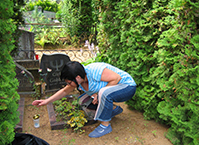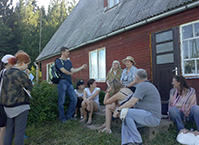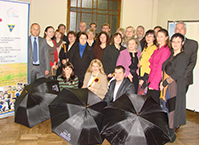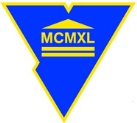About the beer preparation
Categories: Holidays and traditions, Anton Slishan
Story-teller: “You see, growing old I started to think that I should start making beer, whether I manage or not, since I have great experience. At first, I remember how my father made it, then the father had no time, the mother made beer. I know that all.
Firstly, it is necessary to let grains of barley sprout. Grains should be good, not fat-grown, but the ones containing more starch that would turn into sugar. You let them sprout, but not too much, you shouldn’t let them go, let them grow musty. They are kept in the room, where it is warmer. As soon as little sprouts appear, we should grind them at once by hands. I do that myself, the hands become all black. So, you have ground them. This is how they are let sprout: grains are spread, moistened and covered with a wooden slab, you put it on as a blanket. Then it is taken away and barley is moistened once more. As we made minimum amount the red, red rye and barley, rye and wheat beer, basically barley was used, the red, you see, those small sprouts were ground and taken to dry to the bath-house. In the bath-house there was a malt pot, thus the furnace was heated, there was a hatch above and on that hatch there was a square.. it was not a box, it wasn’t, it wasn’t, laid in, that is, some logs were placed, and joined in such a way. And those sprouts were scattered on a riddle, and the heat went up, so they dried. The malt had to be sweet and crisp; it had to be dried well.
Then it was taken to mill. It was milled only in hand mill. Because one should not make flour, it had to be flattened a bit. Now it is done with a flattener, those flatteners press grains well. Then water was boiled at home, it was obligatory to boil water. The water had to be boiled obligatory, so that the lime settles. It was boiled. The water, then, now I might garble something, hops were put into the water or on the malt? You see, I’ve already forgotten. To cut the long story short, then there was zlaukts or stirnīks [a container]. Stirnīks was round and there was a hole in the bottom. But zlaukts was a carved manger, its ends were closed and it had a hole with a plug. At the bottom, there were rods placed, on them the layer of hey and then that milled malt, half-milled, was strewed. And then the water, boiling water, yes, at first the hops were put and then the water was poured. The plug was in. I can’t tell you how long it had to be kept. It was kept for certain time and then it was opened and flowed out. That already was the mash. It was very tasty. Like kvass. Then that mash was poured into big barrels and lees, not yeast, were added. The lees, that yeast, were preserved from every time when beer was made, they were kept in bottles or jars, whatever dish there was, or in pots, so that they only do not grow musty. Then, in the end, that beer would have the taste of must. They were added. In winter, thus, they added the lees; rooms were cold, hot stones were put into the oven, so that the beer would ferment. In summers, the barrels were simply covered; the beer was fermented making use of blankets.
I can’t tell you now, how to determine that alcoholic strength. However, brewers in the brewery tried to state that strength. And then, in the beginning, they did not add sugar, they were poor. It was drunk without sugar; therefore, malt had to be of that sort that would produce that volume of seven or five. Thus, I have already started to remember, that at that time we already added sugar. I know, that when my first sister had her wedding party, then it was discussed how much sugar had to be added – one or two kilograms so that people get drunk or take a prop too much. And then, that couple had to decide, you see. When we celebrated Līgo [Midsummer night festivities], I always brewed, ordered beer – one three-pail barrel without sugar, you see. That was a standard. As to the rest, if you want, you can buy it yourself and drink, but a three-pail barrel was there and everybody praised that beer, everybody said that it was good. Only you don’t get dizzy, that’s the thing.
And when it had fermented, the beer was poured into vessels (strucis). To do that, the plug had to be kept out. When the beer raised close to the plug, then the side plug was closed. And then, when the air had no exit, everything was bubbling inside, it was full, then the plug was closed and the beer was placed in a cool place to mature, it means, it did not have to ferment anymore. But some experts added more sugar, so that it would ferment a little more. Only those could do that whose vessels (strucis) were made of real oak, that they could hold it… that the beer fermented, that they did not blow up. And when they opened the vessels, then there was just froth coming out. It was poured into buckets. Usually it was poured into buckets. The buckets were used for both beer and milk, the buckets, in our area. And then, if the beer was repeatedly poured, then there was only beer, the rest was the froth. Then people said: “Oh, that’s good beer!” So it was.
Hops were usually used to make beer taste bitter. And those who hadn’t added enough of hops, their beer was always sour. People said: “Oh, that was junk, sour beer!” Secondly, some were cleverer, they started to add marsh tea, you see. And that punched one’s head as some narcotic. And such a brewer was cursed on the following day.
Further on, the malt left after the beer, when the mash was poured out, the malt became the pot-ale. You see, at first it was malt, but then it became pot-ale. Pigs were fed that pot-ale. Mash – beer, malt – pot-ale. Pot-ale, we say, pot-ale, we.”
Images
Audio
Researcher: Dr. philol. Gatis Ozoliņš, Daugavpils Universitāte













